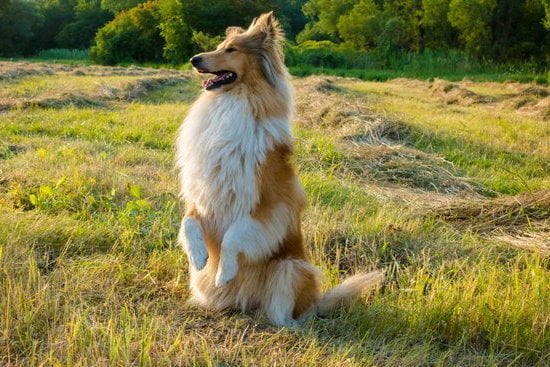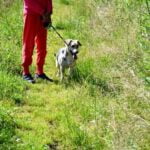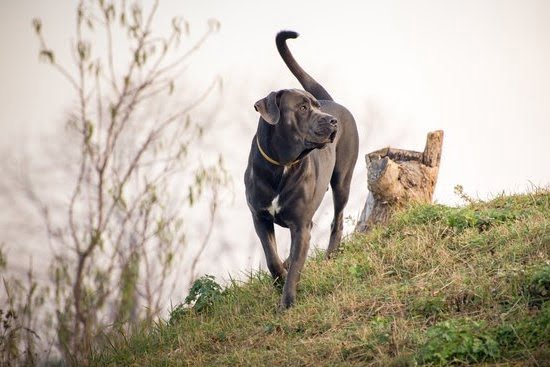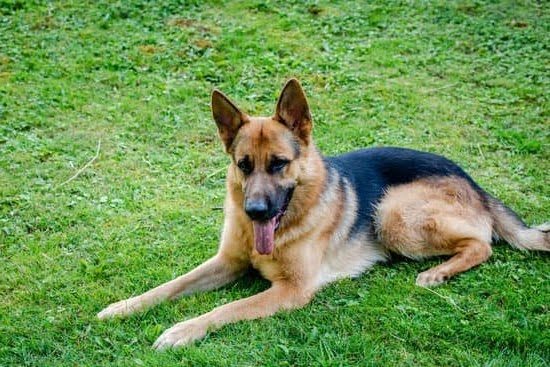Training a dog to eat his food is essential for his overall health and well-being. A proper diet provides the necessary nutrients for your furry friend to stay healthy and active. However, some dogs may exhibit reluctance or picky eating habits, which can be concerning for pet owners. Understanding the reasons behind these behaviors and implementing effective training techniques are crucial in ensuring that your dog receives the nutrition he needs.
There could be underlying issues causing your dog’s reluctance to eat, such as dental problems, digestive issues, or stress. By addressing these issues early on, you can help your dog develop a healthy relationship with food. Establishing a feeding routine is also key in training your dog to eat his food consistently. Dogs thrive on routine and structure, so providing them with a consistent mealtime schedule can encourage better eating behavior.
Choosing the right food for your dog is another important factor in training him to eat his food. Selecting a diet that meets his nutritional needs and preferences can increase his appetite and enjoyment during meal times.
By incorporating positive reinforcement methods and creating a positive eating environment, you can help your dog overcome feeding problems such as picky eating or food aggression. Remember to monitor your dog’s progress and consult with professionals if needed to ensure that he receives the best possible care when it comes to mealtime.
Understanding Your Dog’s Behavior Towards Food
Dogs not eating their food can be a common concern for pet owners. Understanding your dog’s behavior towards food is essential in addressing any underlying issues causing his reluctance to eat. There could be various reasons for a dog’s refusal to eat, such as health problems, stress, anxiety, or simply being a picky eater. By observing your dog’s behavior closely during mealtimes, you can start to identify the root cause of his reluctance to eat.
One way to address this issue is by implementing positive reinforcement techniques when it comes to mealtime. Encouraging your dog with praise or small treats when he shows interest in his food can help create a positive association with meal times. Additionally, ensuring that your dog has a comfortable and peaceful eating environment can also play a role in encouraging him to eat.
If you notice persistent issues with your dog’s eating habits despite trying different training techniques, it might be beneficial to consult with a professional such as a veterinarian or dog trainer. They can provide further insight into how to train a dog to eat his food and offer tailored advice based on your specific situation. Remember that every dog is unique, and some may require more specialized training methods to overcome their reluctance to eat.
| Behavioral Cues | Underlying Issue |
|---|---|
| Lack of Interest in Food | Possible health concerns |
| Food Aggression | Anxiety or stress triggers |
| Picky Eating | Dietary preferences or behavioral factors |
Establishing a Feeding Routine
Here are some tips on how to train a dog to eat his food by establishing a feeding routine:
- Set specific meal times: Choose times during the day when you will feed your dog, ideally in the morning and evening. Consistency with meal times helps regulate your dog’s appetite and reinforces a predictable routine.
- Provide access to fresh water: Always make sure that your dog has access to fresh, clean water throughout the day. This can help prevent dehydration and promote overall health.
- Avoid free-feeding: Refrain from leaving food out for your dog to graze on throughout the day. This can lead to picky eating habits or weight management issues. Instead, offer meals at specific times and remove any uneaten food after 20-30 minutes.
By following these steps and maintaining a consistent feeding routine, you can help train your dog to eat his food regularly and without any reluctance.
Remember that every dog is different, so it may take some time for your furry friend to adjust to the new routine. Be patient, stay consistent, and use positive reinforcement techniques during mealtimes to encourage your dog’s progress. With dedication and patience, you’ll see improvements in your dog’s eating habits over time.
Choosing the Right Food
When it comes to training your dog to eat his food, one of the most crucial aspects is selecting the right diet for your furry friend. Choosing a well-balanced and nutritious diet tailored to your dog’s specific needs can make a significant difference in his overall health and eating habits. Here are some tips on how to pick the best food for your canine companion:
Consider Your Dog’s Age, Size, and Activity Level
Just like humans, dogs have different nutritional requirements depending on their age, size, and activity level. Puppies, adult dogs, and senior dogs all have varying needs when it comes to protein, fat, carbohydrates, vitamins, and minerals. Size also matters – small breeds may require different nutrients compared to large breeds. Additionally, an active dog will need a diet higher in energy compared to a less active one.
Read the Ingredient List Carefully
When choosing dog food, always check the ingredient list. Look for high-quality proteins like chicken, beef, or fish as the main ingredients. Avoid foods that contain fillers like corn or wheat which offer little nutritional value. Opt for natural ingredients and avoid artificial flavors or colors. It’s also essential to steer clear of any ingredients that your dog may be allergic to.
Consult With Your Veterinarian
If you’re unsure about what type of food would be best for your dog, consult with your veterinarian. They can provide valuable insights based on your dog’s specific health condition and dietary requirements. Your vet may recommend specialized diets for issues like allergies or digestion problems. Working with a professional can help ensure that you’re providing the right nutrition for your furry companion.
By taking these factors into consideration and selecting the appropriate food for your dog’s needs and preferences, you’ll be setting him up for success in learning how to eat his meals consistently and healthily. Remember that every dog is unique – what works for one may not work for another. Experimenting with different options will help you determine what suits your canine best in terms of taste and nutrition.
Training Techniques
When it comes to training your dog to eat his food, positive reinforcement is one of the most effective methods. This approach involves rewarding your dog for exhibiting the desired behavior, in this case, eating his food. By using treats, praise, or even playtime as a reward when your dog eats his meals, you are reinforcing the behavior and encouraging him to continue doing so in the future.
Here are some positive reinforcement techniques you can use to train your dog to eat his food:
- Use treats: Offer small, tasty treats as a reward when your dog eats his food. Make sure these treats are something he really enjoys and only give them after he has finished his meal.
- Praise and encouragement: Shower your dog with verbal praise and petting when he eats his food. Positive words like “good boy.” or “well done.” can go a long way in reinforcing the behavior.
- Playtime rewards: If your dog responds well to playtime, incorporate it into his mealtime routine. After he finishes his food, engage in a short play session as a reward for eating.
Consistency is key when using positive reinforcement to train your dog to eat his food. Make sure to be patient and persistent with these training techniques. Over time, you will likely see an improvement in your dog’s eating habits as he associates eating with positive experiences and rewards.
Addressing Common Feeding Problems
When it comes to training a dog to eat his food, one of the common challenges that many pet owners face is dealing with picky eating or food aggression. Picky eating can manifest in various ways, from simply turning their nose up at certain types of food to refusing meals altogether. On the other hand, food aggression can lead to unwanted behaviors such as growling, snapping, or guarding their food bowl.
To address picky eating, it’s essential to start by understanding your dog’s preferences and nutritional needs. Experiment with different types of dog food – wet, dry, raw, or homemade – to see what your furry friend responds best to.
It may also help to mix in some tasty treats or toppings (like broth or vegetables) to entice them to eat. Remember to make gradual changes and avoid giving in to their demands for human food as this can reinforce picky behavior.
For dogs displaying signs of food aggression, it’s crucial to approach the issue with caution and patience. Start by working on basic obedience commands like “sit” and “stay” during feeding time to establish boundaries and respect for your authority as the pack leader.
Avoid free-feeding and set scheduled meal times so your dog learns that you control the availability of food. If aggression persists, seek guidance from a professional trainer who can offer specialized techniques for managing and modifying this behavior.
| Common Feeding Problems | Solutions |
|---|---|
| Picky Eating | Experiment with different types of dog food and add tasty treats or toppings for added appeal |
| Food Aggression | Work on obedience commands during feeding time, schedule meal times, seek guidance from a professional trainer if needed |
Creating a Positive Eating Environment
Eliminate Distractions
When it comes to training your dog to eat his food, creating a peaceful and comfortable space is crucial. One of the first steps in achieving this is by eliminating any distractions that may be present during mealtime. This means feeding your dog in a quiet area away from loud noises, other pets, or busy foot traffic. By providing a calm environment, you can help your dog focus on his food and encourage him to eat without interruptions.
Use the Right Bowl
Believe it or not, the type of bowl you use can impact your dog’s eating behavior. Some dogs may prefer shallow bowls while others like deeper ones. Additionally, consider using stainless steel or ceramic bowls instead of plastic ones to avoid any potential allergies or reactions. It’s also important to keep your dog’s bowl clean and fresh for each meal as some dogs may be sensitive to lingering smells or residue.
Create a Routine
Consistency plays a significant role in helping your dog feel comfortable during mealtime. Establishing a feeding schedule and sticking to it can create predictability for your furry friend, making him more inclined to eat his food at the designated times. Dogs thrive on routine and having set mealtimes can help reduce anxiety or uncertainty around feeding. By following a consistent routine, you are reinforcing positive eating habits and promoting a healthier relationship with food for your dog.
By implementing these tips and tricks in creating a positive eating environment for your dog, you can significantly improve his overall dining experience and make mealtime more enjoyable for both of you. Remember that patience and consistency are key when training your dog to eat his food happily and healthily.
Monitoring Your Dog’s Progress
Once you have started implementing training techniques and establishing a feeding routine to encourage your dog to eat his food, it is crucial to monitor his progress. By closely observing his behavior during meal times, you can identify signs of improvement and adjust your training approach accordingly. One positive sign to look out for is if your dog starts showing more interest in his food, approaches his bowl eagerly, or finishes his meals without hesitation.
Another indicator of progress is if your dog starts maintaining a healthy weight and shows increased energy levels. If you notice these positive changes, it means that your efforts in training him to eat his food are paying off. However, if you still encounter challenges such as picky eating or food aggression, it may be time to reassess your training techniques and make necessary adjustments.
In addition to observing your dog’s behavior during meal times, keep track of any feedback from your veterinarian or dog trainer. They can provide valuable insights on how well your dog is responding to the training methods being used. By staying vigilant and adaptable in monitoring your dog’s progress, you can ensure that he develops healthy eating habits over time with consistency and patience in how to train a dog to eat his food.
Consultation With a Professional
As a responsible pet owner, it is crucial to understand the importance of training your dog to eat his food. This not only ensures your dog’s overall health and well-being but also establishes a harmonious routine for both you and your furry companion. By following the right techniques and strategies, you can help your dog develop healthy eating habits that will benefit him in the long run.
One of the key aspects of learning how to train a dog to eat his food is recognizing when it may be necessary to seek help from a professional. Not all feeding issues can be easily resolved at home, especially if there are underlying behavioral or health-related concerns. Consulting with a veterinarian or a certified dog trainer can provide valuable insights and guidance on how to address more advanced feeding problems effectively.
Professional guidance can be particularly beneficial when dealing with complex issues such as picky eating or food aggression in dogs. These behaviors often require specialized training techniques and tailored approaches to ensure successful outcomes.
A trained professional can assess your dog’s specific needs and create a customized plan to help him overcome any obstacles hindering his mealtime behavior. Remember, seeking help is not a sign of weakness but rather a proactive step towards improving your dog’s quality of life.
Frequently Asked Questions
Will My Dog Eventually Eat His Food?
Dogs, like humans, may not always eat their food immediately. Some dogs are picky eaters or may lose their appetite due to stress or health issues. It’s important not to panic if your dog doesn’t eat right away – monitor his behavior and consult a vet if necessary.
Why Won’t My Dog Eat Food by Himself?
There could be several reasons why your dog won’t eat by himself. It could be due to dental problems, illness, anxiety, or even boredom with the same food. Try offering different types of food, feeding at specific times, or seeking advice from a veterinarian for a solution.
How Long Will a Picky Dog Go Without Eating?
A picky dog can go without eating for about 24-36 hours before it starts becoming concerning. However, it is essential to monitor your dog’s behavior and ensure he stays hydrated during this time. If your dog continues refusing food beyond this time frame, consult a vet to rule out any underlying health issues.

Welcome to the blog! I am a professional dog trainer and have been working with dogs for many years. In this blog, I will be discussing various topics related to dog training, including tips, tricks, and advice. I hope you find this information helpful and informative. Thanks for reading!





